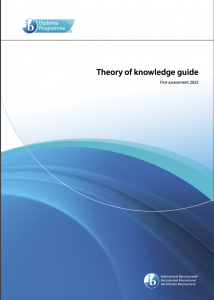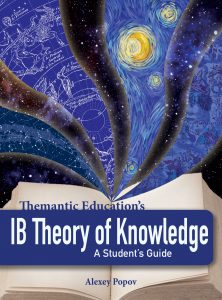The TOK syllabus has changed. It is time to download the new IB TOK Guide (first assessment 2022) and study it thoroughly. However, in this blog post I provide a quick overview of the things that changed.
Read More:

Our new blog, textbook, teacher support packs and other resources are here to help you with the new TOK course.
If you are already teaching the course, you will be wondering “What changed?” Here are the the major and most significant differences between the old and the new spec:
- Students are no longer required to formulate knowledge questions. Knowledge questions will be given to them. Students will be assessed on how they answer these questions
- There are now 5 areas of knowledge instead of 8 (see below), but they are compulsory so we must teach all five.
- There are “themes” – one Core theme (“Knowledge and the knower”) and five optional themes out of which teachers should choose two (see below).
- The knowledge framework now consists of the following four elements:
- Scope
- Methods & Tools,
- Perspectives
- Ethics
- The knowledge framework is now “compulsory”
- There is a new internal assessment task – TOK exhibition.
The New Syllabus
Here is what the current (new) syllabus looks like:
Syllabus | Study one Core theme: “Knowledge and the knower” Study 2 out of 5 optional themes:
Study 5 compulsory areas of knowledge:
|
Knowledge framework | It is compulsory, for every theme and every area of knowledge, to cover questions related to the four elements of the knowledge framework:
|
Knowledge questions | Central to the course. Students are no longer required to formulate knowledge questions on their own. Questions are given to them. |
Assessment |
|
The Old Syllabus
For comparison, here is what the old syllabus looked like:
Syllabus | Study 4 out of the following 8 ways of knowing:
Study 4 out of the following 8 areas of knowledge:
|
Knowledge framework | It is suggested to unpack areas of knowledge using the following framework:
|
Knowledge questions | Central to the course. Students are required to formulate knowledge questions on their own. |
Assessment |
|
Things get interesting when you try to thoroughly analyze the differences and what they mean to us.
See our next blog post (coming soon): Traps and loopholes in the new TOK syllabus.

Check out our new TOK textbook.

Alexey Popov is a teacher of IB Psychology and Theory of Knowledge. He is an IB author, examiner and workshop leader. He also authored Oxford IB Psychology books. He currently lives in Hong Kong.
